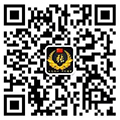The continuous development of science and technology has put forward increasingly high requirements for product quality, and now technological innovation is crucial for the development of enterprises. For example, in the motor industry, servo motors are increasingly developing towards high power, high torque, high speed, good dynamic response, and good mechanical characteristics. With the requirements of national strategic development, aviation industry engines will be localized in the coming years to enhance their core competitiveness. Furthermore, with the development of the new energy sector, pure electric bicycles and vehicles have also achieved rapid growth. The electric vehicle industry utilizes high-efficiency motors (permanent magnet synchronous motors, brushless motors) and drivers to achieve energy-saving and environmental protection effects. Similarly, society is developing, especially with the continuous updating of new technologies in the field of electric motors. The requirements for motor testing instruments are also increasing! Motor testing includes motor stator testing, rapid testing of motor production lines, factory testing of motors, and motor performance testing. It is required that the motor stator testing system be fast and highly intelligent; The overall testing accuracy should be high and the level of intelligence should be high; Motor performance testing is a comprehensive analysis of the overall performance indicators of a motor. How to choose a good dynamometer?
1: In the testing of AC/DC motors and electric tools, the dynamometer is often used as a testing equipment. The dynamometer mainly tests the torque, speed, and output power of the motor. However, not every dynamometer can meet all motor testing requirements, mainly considering three factors:
1. The torque testing range, the torque of the dynamometer is usually a large torque value that cannot be exceeded. If the test is completed in a short period of time, there are generally not too many problems.
2. The range of speed testing, the speed of the dynamometer is usually the maximum speed it can withstand. If it is used for a long time at excessive speed, it will greatly shorten the service life of the dynamometer, especially mechanical wear.
3. The power usually indicated on a dynamometer refers to the power that the dynamometer can absorb, because typical dynamometers (hysteresis, magnetic powder, eddy current dynamometers achieve energy consumption by absorbing heat) are the output power of the tested AC/DC motor or electric tool. Strictly speaking, this indicator cannot be exceeded, otherwise the dynamometer is easily burned out due to the inability to dissipate heat;
2、 The selection of a dynamometer should not only meet the three main technical indicators of speed, torque, and power, but also check whether it meets the specific requirements of the test. Generally, motors need to be tested for parameters such as no-load speed, no-load loss, and locked rotor torque, which also need to be carefully considered!
3、 When selecting a dynamometer, all test data for the good motor should be between 30% and 90% of the dynamometer's performance parameters. Because the testing accuracy of the dynamometer in this range is guaranteed, it is mainly divided into three parts: the mechanical part of the dynamometer, the accuracy range of the speed and torque sensor, and the display accuracy of the speed and torque power measuring instrument.
4、 The commonly used dynamometers are mainly classified into the following categories: hysteresis dynamometers, magnetic powder dynamometers, asynchronous dynamometers (electric dynamometers), eddy current dynamometers, and less commonly used dynamometers (permanent magnet synchronous motors, servo motors, etc.).
1. Eddy current dynamometer and asynchronous dynamometer cannot achieve locked rotor of motors or electric tools, but their upper limit of speed is very high, usually 20000~30000 RPM; The torque can also be very large.
2. The speed of hysteresis dynamometer is generally below 20000 revolutions per minute, but it can achieve locked rotor, but the power is not too high; The torque is generally below 20Nm.
3. The speed of the magnetic powder dynamometer is relatively low, usually 1500~5000RPM, but the torque can be increased and the motor can also achieve locked rotor.
5、 Typically, asynchronous dynamometers do not require water cooling, only air cooling is sufficient; Eddy current dynamometer, hysteresis dynamometer, and magnetic powder dynamometer require both water cooling and air cooling, while some low-power hysteresis dynamometer can meet testing requirements without water cooling; During the use of the dynamometer, the cooling function must be turned on.
Welcome!

Service Hotline
18994987292
Hot Keywords: Magnetic powder dynamometer hysteresis dynamometer
Advanced Search:
News
Contact UsContact Us
WhatsApp:+8618867660609
(7 days * 24 hours)
Phone(Weixin):18994987292
WhatsApp:+8618867660609
QQ:961543194
Email:961543194@163.com
Address:Building 5, No. 65 Guanhe Middle Road, Tianning District, Changzhou
dynamic
How to choose a good dynamometer
Source: Time:2021-01-07 17:35:35 views:
The continuous development of science and technology has put forward increasingly high requirements for product quality,
 Address:Building 5, No. 65 Guanhe Middle Road, Tianning District, Changzhou
Address:Building 5, No. 65 Guanhe Middle Road, Tianning District, Changzhou  Phone":0519-80581099
Phone":0519-80581099 E-Mail:961543194@qq.com 备案号:
E-Mail:961543194@qq.com 备案号: About
About Product
Product NEWS
NEWS follow with interest
follow with interest